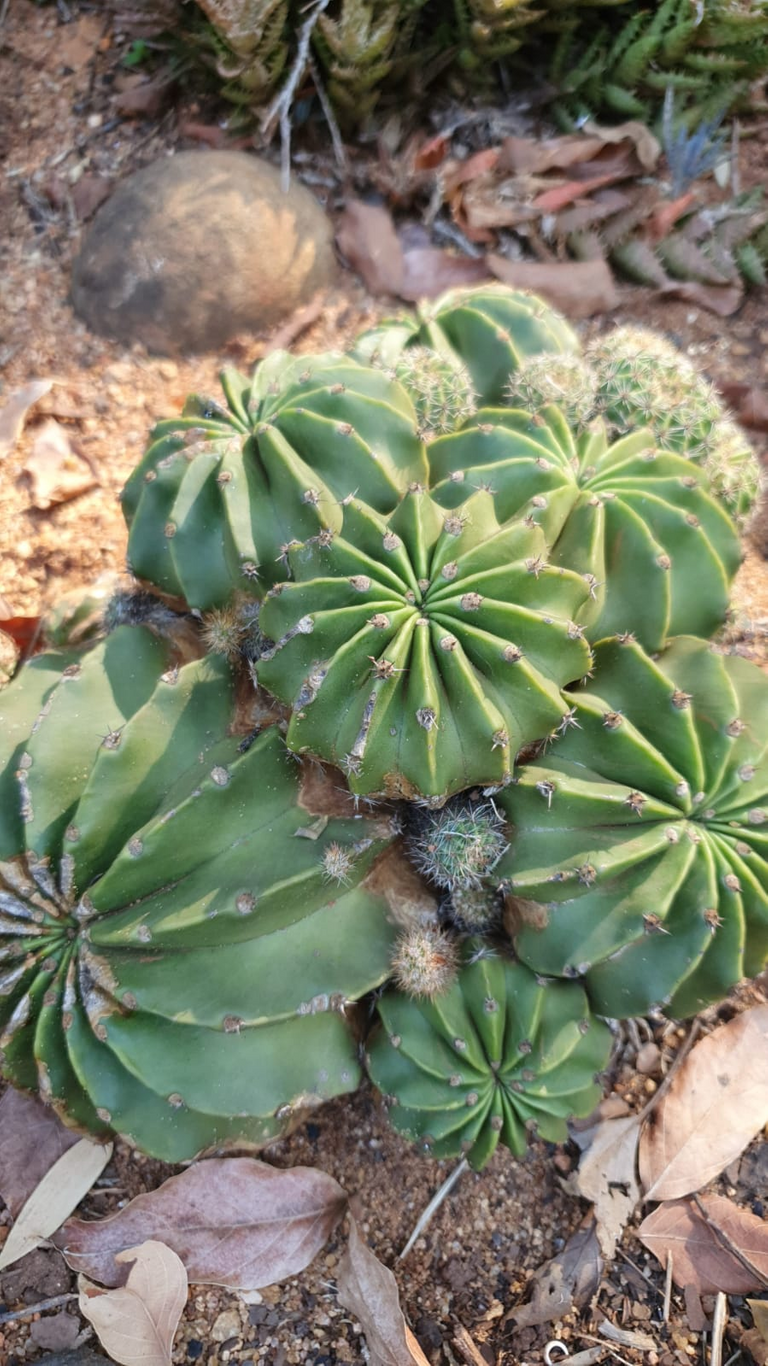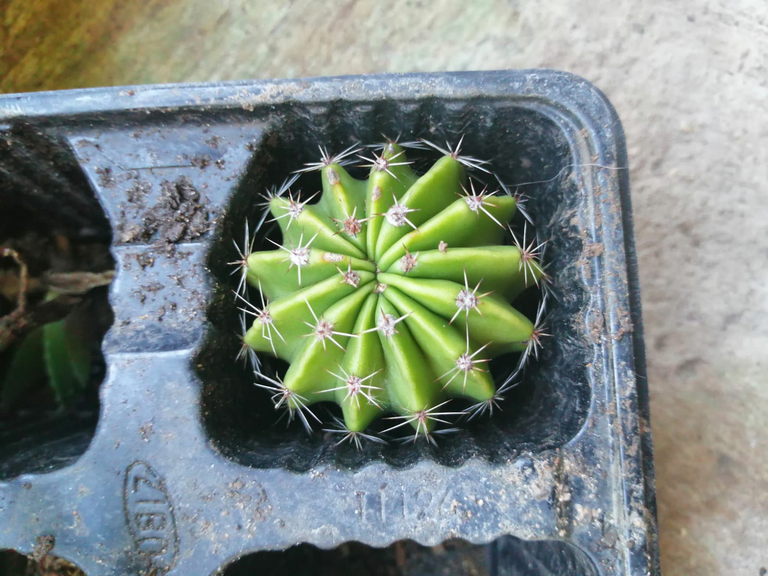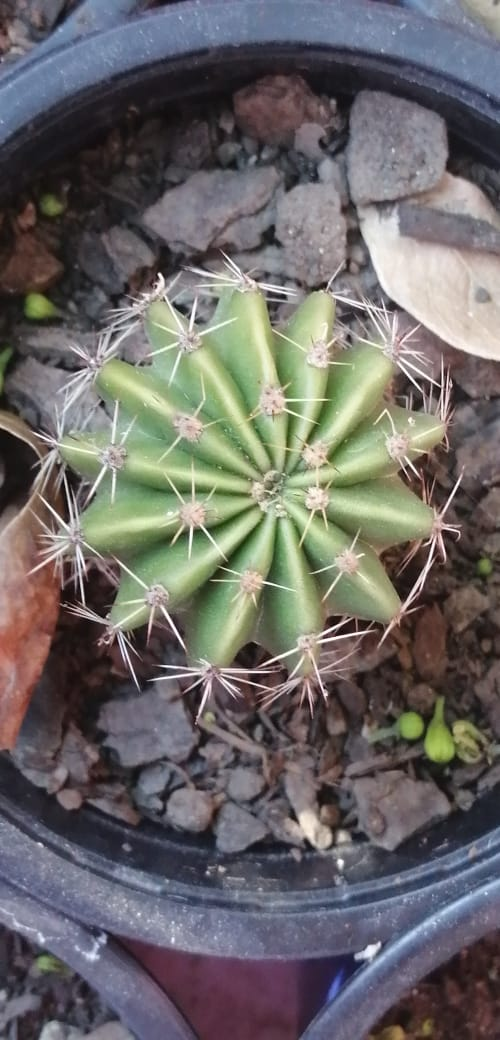Removing Some Echinopsis Pups for Replanting

One of the amazing perks of living in hot semi arid conditions, is the fact that succulents as well as cactus tend to do very well whether they are kept inside or grown outdoors in rockeries. In fact most species seem to thrive even under neglect.
And given the fact that cacti is a very resilient and water wise plant, they are highly sought after with landscapers and gardeners alike.
So with the upcoming farmers market, I decided to pot out some more cacti from pups to sell, and the one that I decided to start off with is the Echinopsis Pups, because they are so easy to wean off of the mother plant and can establish well over a very short period.
These cacti in my opinion is one of the easiest to grown and care for, and they are great for beginner cacti enthusiasts to start their collection with.
Above you can see one of the clusters of Echinopsis also known as the Hedgehog cacti, growing in a section of my garden, with various sizes of pups attached to the mother plant.

How to remove Echinopsis pups from the mother plant:
With Cacti, you will find that there are various ways to separate the pups from the mother plants, and this is mostly dependent on the plant itself as well as the root system. Some have tubular roots that need to be in tact in order for the pups to re-establish, while others would need to be cut off and grown from the cuttings. However, with the hedgehog cacti - this process is really simple. So let me walk you through how I remove and re pot my pups.
Normally I do this using a teaspoon, what I would do is start on the most protruding pups, I would use the teaspoon as a wedge to push them away from neighboring pups, this simply helps reduce any damage that might occur from the separation, with the spoon in place, I would then take the pup with my hand and gently twist it until the pup releases from the mother, it is important not to try and pull the pup off, as this might cause tearing and damage to the base that would leave the baby susceptible to fungi and other plant diseases and could also effect the water absorption as well as their retention ability.
After this I would normally place the pup in an empty container for a few days. This allows the base of the plant to dry out completely helping it avoid any fungal growths and so on as mentioned above. This also places the plant in stress which will encourage root grow once the plant is potted over in favorable soil. I find that six or eight cavity seedling trays works well for storing the plants during this time period as you can see above. The trays keep the plants steady so that they don't roll around, while allowing enough airflow for the base break to dry out and insulate itself.

Finally after a few days of standing, I then simply plant the pups over into small pots filled with succulent/cacti potting mix. At first I would water these little saplings every two to three days using a spray bottle to do so after the initial watering, I will carry on doing this for a month or so, thereafter I will extend the increments so that they get water once every 5 days.
These cacti root reasonably fast, and will be ready to sell in no time...